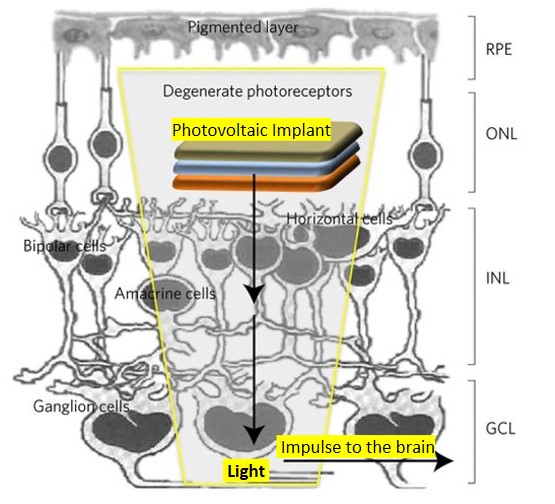By Kristina Fidanovski
If you don’t know what a polymer is, let alone a conjugated polymer, don’t panic. I guarantee you’ll get it by the end of this article. You use polymers every day – they’re things like plastics and resins, DNA and proteins. To get into the nitty-gritty: they’re one huge molecule made up of lots and lots of repeating units called monomers. They’re also probably not the first thing you think of when you’re looking for a material that conducts electricity. But conjugated polymers can be conductive, and they’re an interesting and really important type of material. Here’s why: imagine a circuit board as durable and flexible as the plastics you encounter every day. A conductive material like that could find its way into flexible displays, fabric-like solar cells, and even the human body for imaging and therapy.
*Spoiler Alert*: They already have.
As interesting as flexible solar cells are (no really, go check them out, they’re super cool), the biological applications are mindboggling, and so those are the ones you’re going to read about here. I might be a bit biased, so bear with me…
The research on conjugated polymers in biological applications is just getting started, but here are a few examples of the latest research:
1. An artificial retina that restored sight to blind rats.1
This artificial retina is useful for cases where the blindness is due to a degenerative disease, like retinitis pigmentosa, where the photoreceptors die but the rest of the vision apparatus is still functional. In other words, the cells that have died are the ones responsible for converting light into an electrical signal, which can then be transmitted to the brain by the nerves. These cells can be replaced with a polymer device (since conjugated polymers are often very good at absorbing light and converting it into an electrical signal).
The rats that got this implant were more sensitive to light and the activity in the area of the brain responsible for processing vision – the visual cortex – was practically the same as in seeing rats.

2. Recording local neuron activity in an actual human brain.2
The NeuroGrid (visible on a flower in a and on a rat brain in b) is made up of gold pads which are covered and interconnected with a conjugated polymer. It produced really low noise recordings of small, localised areas of brain activity which could provide a lot of information to researchers about what individual brain cell connections are up to, particularly in people with epilepsy. Two people having surgery for epilepsy had it tested on them, so this soft, flexible electrode system has actually been stuck on a human brain!

3. Light-up polymer skins.3
These thin, flexible, polymer skins can be attached to humans in the form of, for example, a pulse oximeter: a device to measure the oxygen concentration of blood like in Figure 3b. You could then display that data from the pulse oximeter directly on the body in a similar way to Figure 3d. Figure 3c shows some of the awesome versatility of the system by displaying their university logo in different colours… on someone’s face!

- Maya-vetencourt, J. F. et al. A fully organic retinal prosthesis restores vision in a rat model of degenerative blindness. 16, 681–689 (2017).
- Khodagholy, D. et al. NeuroGrid: Recording action potentials from the surface of the brain. Nat. Neurosci. 18, 310–315 (2015).
- Yokota, T. et al. Ultraflexible organic photonic skin. Sci. Adv. 2, e1501856 (2016).
Follow Kristina on Twitter (@Kris_Fidanovski)




